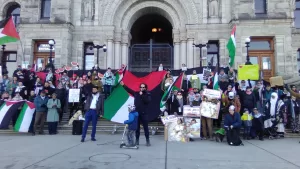BC Health Care Matters and Moms Stop The Harm Protest at Council of the Federation
Why do social causes whose agendas resonate with the general public fail to draw even modest crowds at protests?
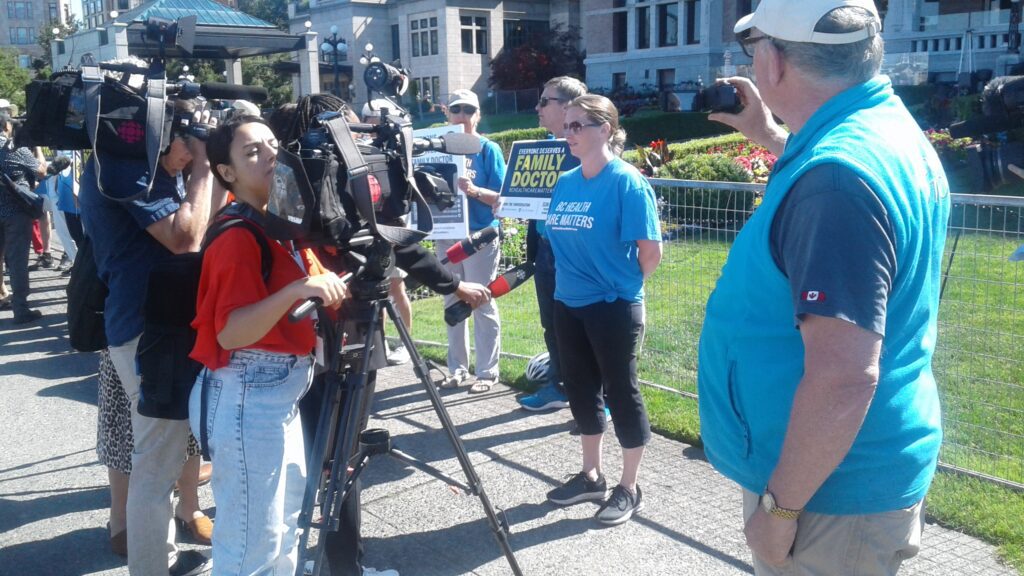
About three dozen protesters, affiliated with either BC Health Care Matters or Moms Stop The Harm, simultaneously protested over their respective agendas before the Empress Hotel in Victoria, which was hosting the Council of the Federation‘s meeting of Canadian premiers. BC Health Care Matters demanded more family doctors to address an acute shortage impacting one million British Columbians, while Moms Stop The Harm clamoured for a safe drug supply to counter a hecatomb of drug overdoses in the province and beyond.
To be honest, the low turnout was disheartening. Both organisations have mobilised far greater numbers at previous events, but today there were about half as many journalists as protesters. I wonder why events announced far in advance, supporting widely popular causes, at such an obvious beacon for protests, with ideal weather, would fail to draw even a few hundred people.
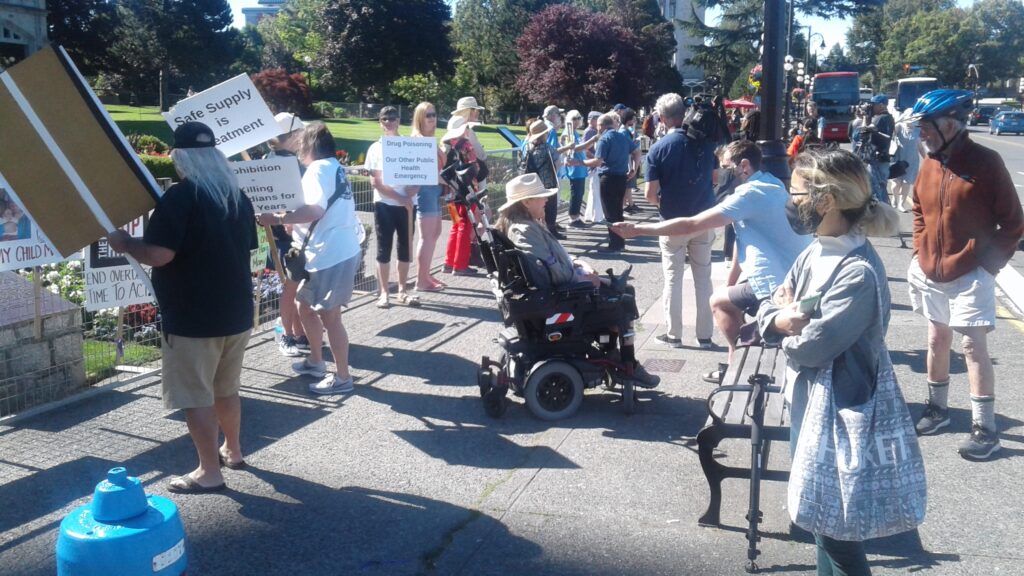
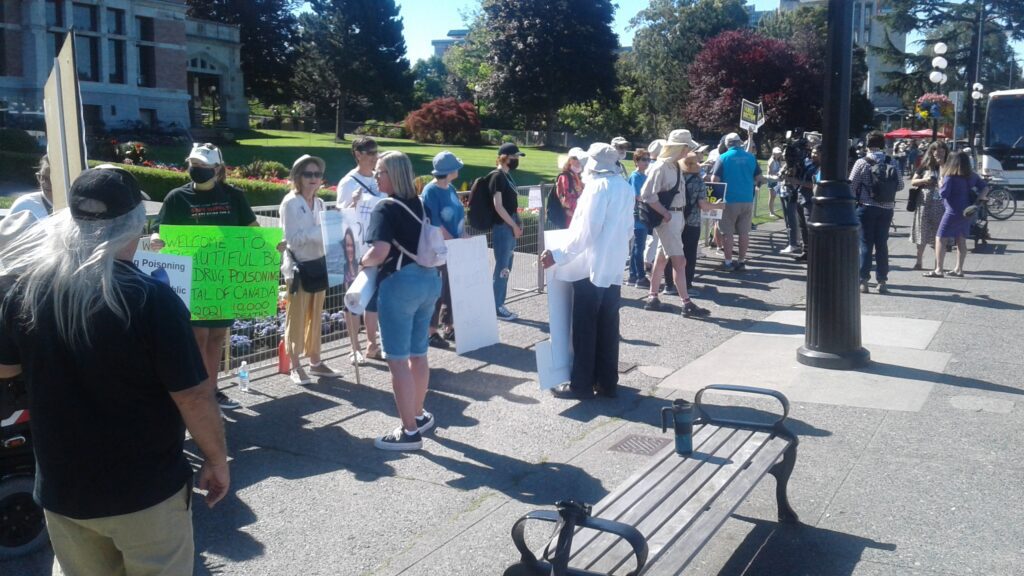
I’m tempted to reach some cynical conclusion, like that people have the health care system and policies they deserve for failing to vote with their feet and make their voices heard, but this cannot be the only reason. One possibility is that the word simply did not get out. I only found out about the Moms Stop The Harm rally two days in advance, while Facebook Events was the only way I learned about BC Health Care Matters’ intentions. Likewise, I’ve noticed that environmental groups like Save Old Growth struggle to get the word out beyond the mainstream media. Militant organisations in general even look oblivious to their lack of reach beyond their own circles.
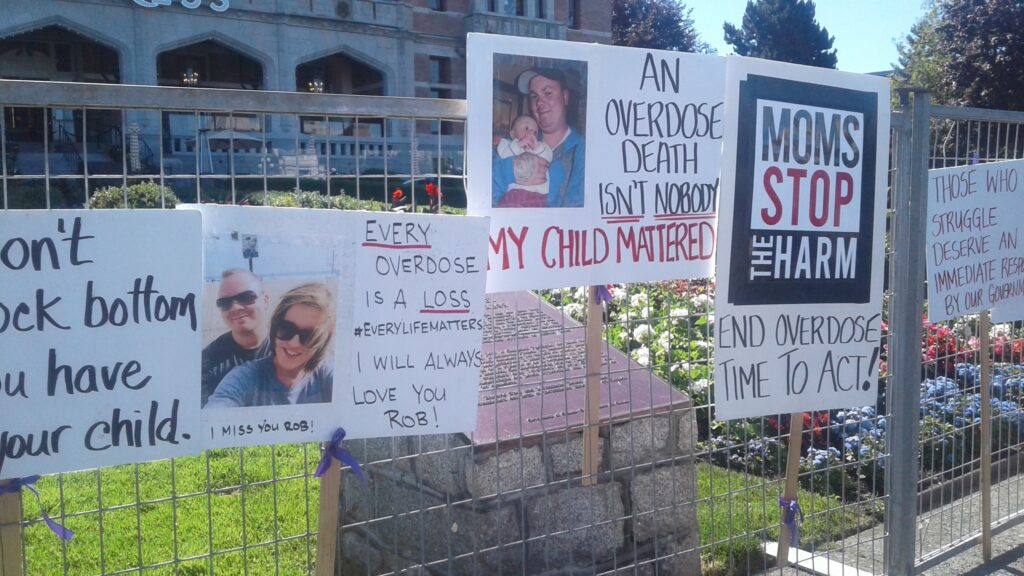
In any case, relying solely on traditional media coverage for exposure is a recipe doomed to failure. Turnout is arguably the most significant metric in whether a protest will be successful, and organisations that are any serious in wielding political leverage must work on drawing crowds as large and as vocal as possible. Reaching out to nonmilitant organisations with similar agendas is one option that is often overlooked or even frowned upon, to my dismay. Another is to reach out to people on the streets, with tracts or signs, inviting people to show up at events; politicians know elections are won shaking hands with voters, not holding press conferences. Of course more widespread social media coverage, preferably with viral material, is the way of the 21st century, and spending a few dollars on ads can also make a difference. Likewise, the Moose Hide Campaign was a huge success because local high school students attended. Preparing the ground for a protest in such ways is just as important as the protest itself, and yet this crucial step is often neglected.
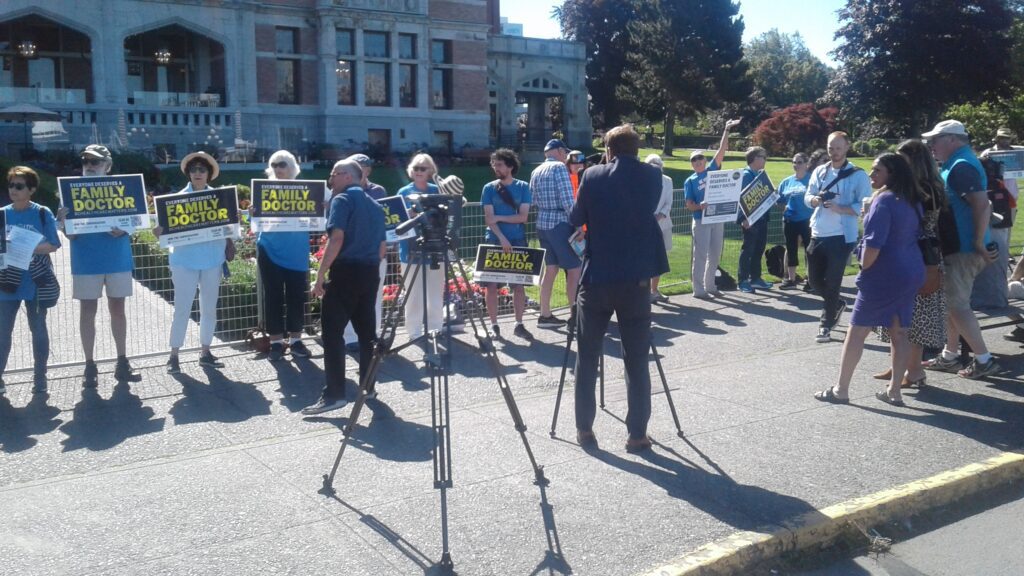
Ironically, holding joint protests may also be effective, even though today’s simultaneous events suggest otherwise. What made the success of the Freedom Convoy protests here in Victoria isn’t merely honking trucks, but the wide breadth of organisations that rallied together for a common cause. Social causes would likely benefit from such an approach as well.
Discover more from Rulebreakers
Subscribe to get the latest posts sent to your email.



